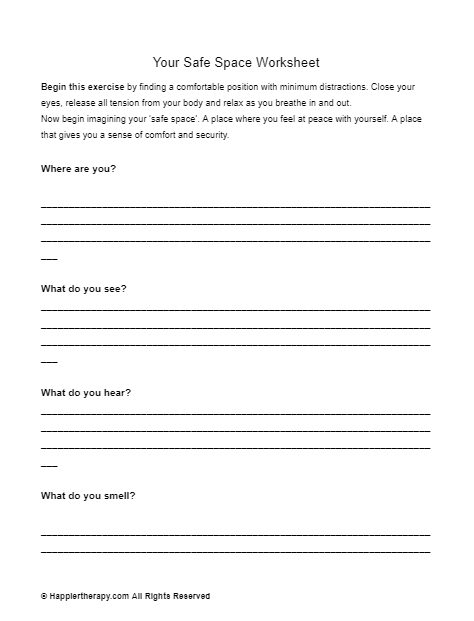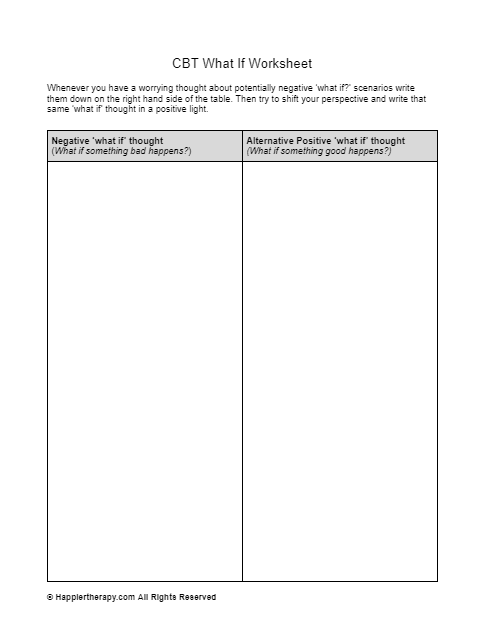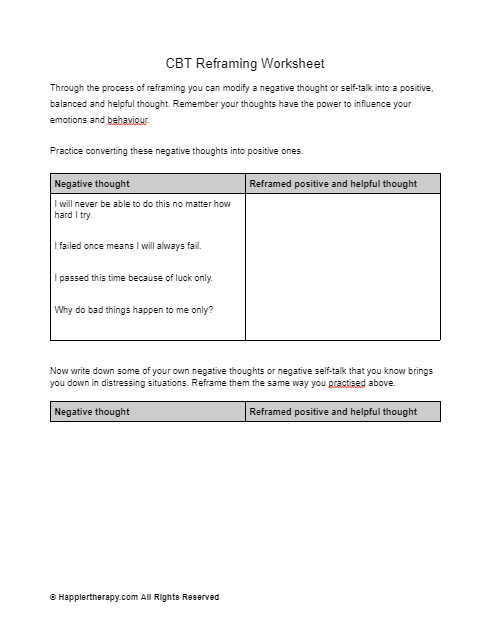Worksheet for PTSD
What is the theory behind this worksheet for PTSD?
The theory behind a worksheet for PTSD (Post-Traumatic Stress Disorder) typically involves the use of cognitive-behavioral therapy (CBT) techniques. CBT is a form of therapy that helps individuals recognize and challenge negative thoughts and beliefs that contribute to their distress. In the case of PTSD, a worksheet can help individuals identify triggers and symptoms associated with their trauma and develop strategies for managing these symptoms. The worksheet can also help individuals understand their thoughts and emotions related to their trauma, and challenge any negative or distorted beliefs they may have about themselves or their experiences. The goal of a worksheet for PTSD is to help individuals gain a better understanding of their experiences, develop new coping strategies, and ultimately reduce symptoms of anxiety and depression. By working through the worksheet, individuals can begin to identify patterns in their thinking and behavior and learn how to make positive changes to improve their mental health and well-being.
How will the worksheet help?
A PTSD worksheet can help individuals in several ways:
- Identifying triggers and symptoms: By completing the worksheet, individuals can identify specific triggers that cause their symptoms of PTSD to worsen, such as certain sights, sounds, or smells. They can also identify their physical and emotional symptoms, and monitor their intensity and frequency over time.
- Developing coping strategies: The worksheet can also help individuals develop coping strategies to manage their symptoms and reduce their distress. This may involve practicing relaxation techniques, such as deep breathing or progressive muscle relaxation, or engaging in activities that they find calming or enjoyable.
- Understanding thoughts and emotions: The worksheet can also help individuals gain a better understanding of their thoughts and emotions related to their trauma. By identifying negative or distorted beliefs, individuals can challenge these beliefs and develop a more positive and accurate perspective of themselves and their experiences.
- Improving self-awareness: By working through the worksheet, individuals can become more self-aware and gain a better understanding of their experiences and reactions to traumatic events. This increased self-awareness can help individuals identify patterns in their thinking and behavior, and develop new strategies for managing their symptoms.
How to use the worksheet?
Complete each section of the worksheet to gain a better understanding of your experiences and develop strategies for managing your symptoms of PTSD.
Was this helpful?
References
1.-
Post-traumatic stress disorder (PTSD). (n.d.). Psychology Tools. https://www.psychologytools.com/professional/problems/post-traumatic-stress-disorder-ptsd/

 By
By



